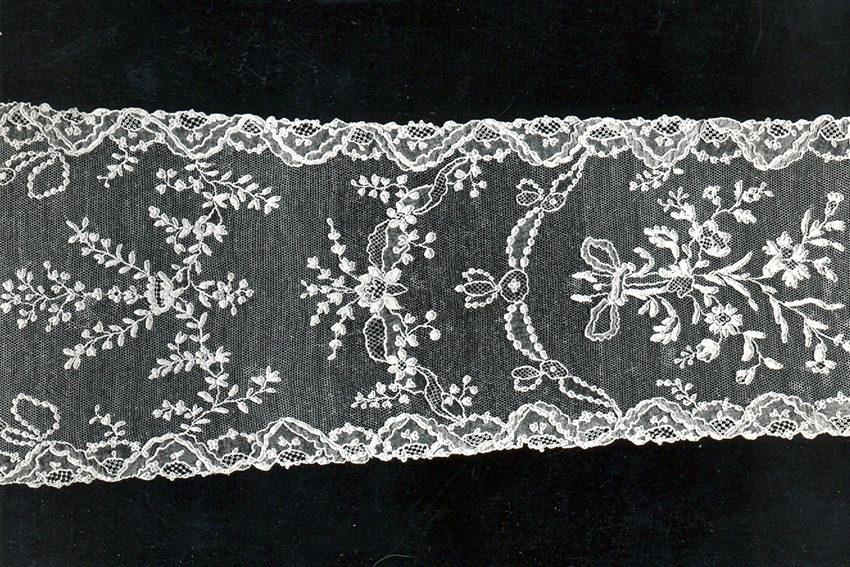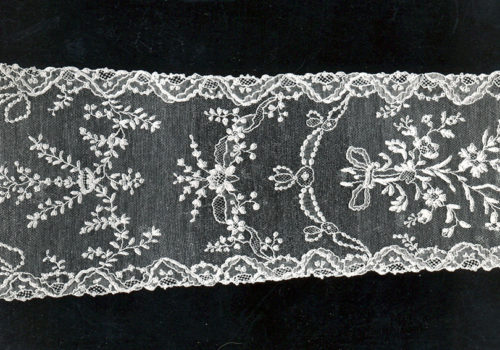Summary
Alençon lace or Point d’Alençon is a rare technique of needle lace-making from the town of Alençon in Normandy in north-west France. This craftsmanship was inscribed in the UNESCO List of Intangible Cultural Heritage in 2010. The fine Alençon needle lace requires a highly skilled hand and a considerable amount of time to produce – approximately seven hours per square centimetre according to UNESCO. The lace created through this technique is often used for decorative purposes in civil and religious life. The design elements of the lace are held together by a delicately stitched net.
Its process comprises a number of stages from drawing and pricking of the design, creating an outline, stitching the patterns, shading with filling stitches, decorating, relief embroidery to trimming. To become a master Alençon lace-maker, one must go through a practical apprenticeship that relies entirely on oral transmission and practical teaching in a close relationship between the specialized lace-maker and the apprentice. This training process takes seven to ten years to master, and each lace-maker must know how to complete all the stages of the making process.
What does Alençon lace look like?
Discover Alençon lace crafts from The Craft Atlas and other digital collections in the image gallery.
Technique
How is Alençon lace done?
The process of creating Alençon needle lace involves several stages, including drawing and pricking the design on parchment, creating the outline of the design and the background netting, stitching the patterns, shading with filling stitches, decorating with designs, embroidering to create relief, and then removing the lace from the parchment with a razor blade, trimming it, and polishing the filling stitches with a lobster claw.
Application
What is Alençon lace used for?
The lace created through this technique is often used for decorative purposes in both civil and religious life.
Where does Alençon lace come from?
Alençon lace is a craft from
Alençon, France



